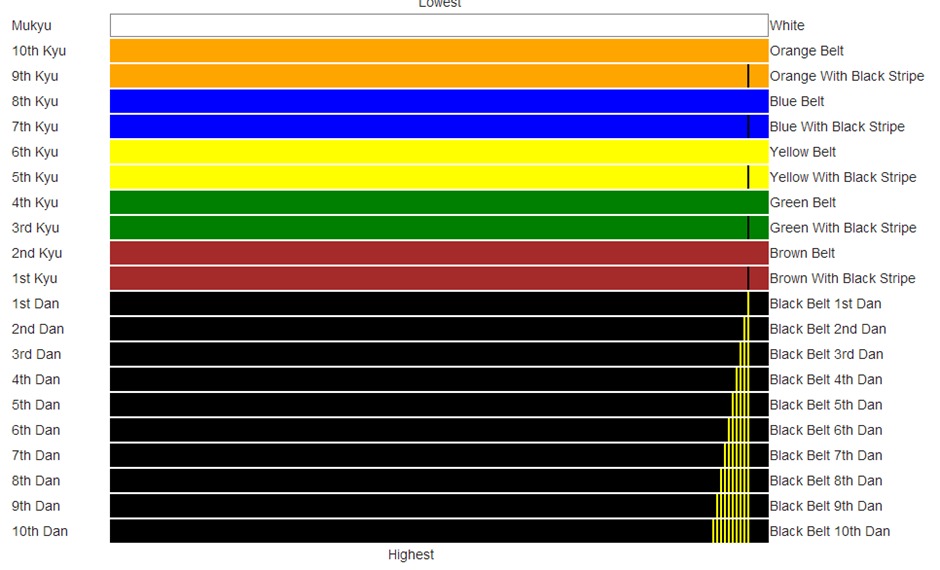
Masutatsu (‘Mas’) Oyama was the founder of the Kyokushinkai style
Kyokushin (極真) is a style of stand-up, full contact karate, founded in 1964 by Korean-Japanese Masutatsu (Mas) Oyama. Kyokushin is Japanese for “the ultimate truth”, developed from the determination of the pursuit of ultimate truth of mind, technique, and body. Kyokushin is rooted in a philosophy of self-improvement, discipline and hard training. It is grounded in both the Okinawan Shuri-te traditions (such as Shorin-ryu and Shotokan) and hard and soft characteristics of Naha-te and Tomari-te styles, such as Goju-ryu, and also includes realistic fighting.
The founder, Sosai Mas Oyama, often said that the difference between sports and Budō, or “The Martial Way“, is the path of self-discipline. Budō is this challenge in life itself. Kyokushin Karate was founded by a man who was dedicated to Budō.
what differentiates Kyokushin Karate from sport, he tells us, is the aspect of Budō. Budō literally translated is “Way of War” or The Marital Way. Budō is a compound of the root bu (武), meaning war or martial; and dō (道), meaning path or way. It’s in essence the modern rendition of Bushido (武士道); literally “the way of the warrior”.
Bushido was a way of life for the Samurai (warrior class of feudal Japan). This included a code of ethics and disciplines that shaped the way a Samurai should live. Though there are no more samurai, the ethics and standards still live on in the teachings of various schools of martial arts. Budō is the discipline associated with martial arts that shape the way a true martial artist (Budō-ka; 武道家) should live. Budō refers to a way of life, led by those who practice martial arts.
This is extremely important for young students, as it is the building blocks of integrity, honesty, empathy, leadership, and responsibility. It naturally builds confidence in a young person.
Like honing a sword, we are honing our spirit along with our bodies. Sensei tells us that by respecting the Etiquette of the dojo we are furnishing the noble qualities of the soul, which distinguishes Kyokushin Karate from sport, and the budō-ka from an average athlete. It isn’t just about being able to do an exercise or to fight. It is about doing so with attention to detail. With respect not only given to your fellow martial artist, but to yourself and the environment around you. About striving to be the best you can be.
Though Kyokushin Karate may not be descended from Samurai, Karate is descended from nobility, of both Bushidō, and Budō.
Kyokushin Karate trains in Dojos, which can be anything from a studio, to a school gymnasium. Dojo (道場) is a Japanese term which literally means “place of the way”. Essentially, a training hall.
lasses are led by a Sensei, which is Japanese for “teacher”. Classes can be focused on usually one of three areas, depending on the day and personal style of the teacher. These three areas are Kihon, Kata and Kumite.
Kihon (基本, きほん ?) is a Japanese term meaning “basics” or “fundamentals.” The term is used to refer to the basic techniques that are taught and practiced as the foundation of most Japanese martial arts. Think of standard blocks, kicks and strikes.
Kata (型 or 形 literally: “form”), a Japanese word meaning detailed choreographed patterns of movements practised either solo or in pairs. In other words, if you think of the basics you learn in Kihon like words, kata now teaches you to form sentences, stringing those basics together in prearranged movements.
Kumite (組手) literally translated means “grappling hands” and is one of the three main sections of karate training, along with kata and kihon. It refers to forms of sparring. Kumite is the part of karate in which a person trains against an adversary, and the part which has made Kyokushin so famous. Unlike most other traditional forms of karate which do “point fighting”, Kyokushin is full contact. Now, before you go running the other direction, know that this isn’t all the time. When practicing, most dojo’s have students wear forms of protective equipment and it is done lighter contact, especially for lower belts and those inexperienced. Though it can look intimidating, it can be a lot of fun and an amazing confidence builder. As before, if you think of Kihon like words, Kata prearranged sentences, think of Kumite as open free-form conversation.
Kyokushin karate has a grading system where students move up a series of colored belts after undertaking testing. The belt system is divided into Kyu grades (beginner grades) and Dan grades (advanced grades). The system is as follows:
The path in Kyokushin is not a short one. One would expect to train twice to three times a week for at least 5 years before achieving the rank of 1st Dan, or Black Belt. 1st Dan is considered the beginning, with Dan grades going up to 10th Dan, with the 10th usually reserved for the founder of the system, or the head of an organization. Comparing the ranks to the Western schooling system, think of the coloured belts = grade school, 1st Dan through 4th Dan = undergrad, 5th Dan = Masters, and anything above = a phd.
Years Of Experiences
Registered Students
Instructors
Registered Shodan
Assistant Instructors
Registered Nidan